Does your baby or toddler like to put everything in their mouth? If you’re looking for an alternative to soap foam, this taste-safe sensory foam is the perfect solution! It’s baby-safe, toddler-approved and super simple to whip up—and best of all, you’ll only need two edible ingredients to make it.
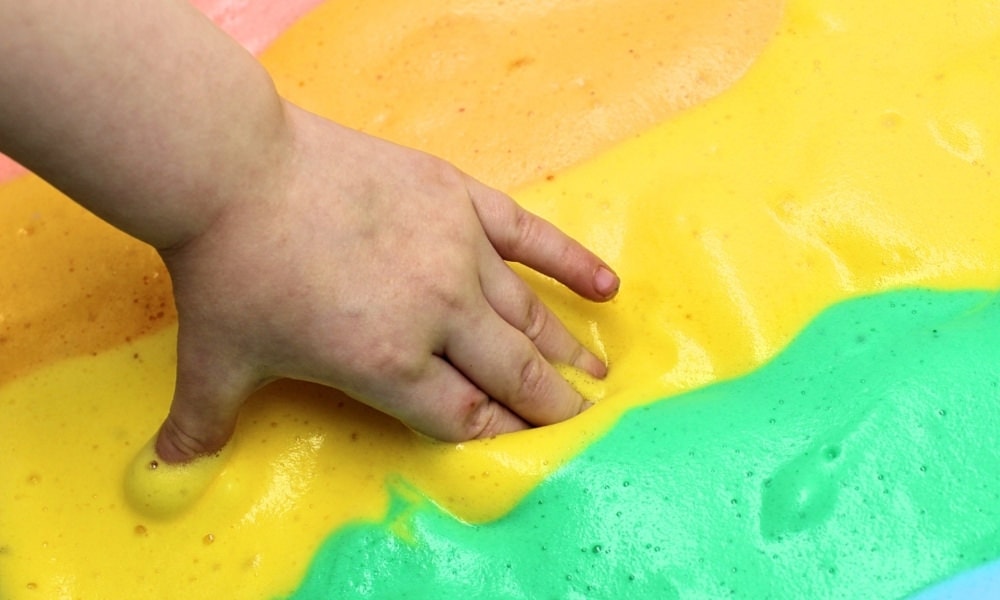
This post may contain affiliate links, which means I may receive a commission, at no extra cost to you, if you make a purchase through a link. As an Amazon Associate, I earn from qualifying purchases. Please see my full disclosure for further information.
JUMP TO…
If you’re looking for a play foam recipe that is safe for your baby, you’ll definitely want to try this chickpea foam recipe.
The foam is made from aquafaba, which is the leftover liquid you’ll find inside a can of chickpeas. Aquafaba is often used to replace egg whites in vegan recipes because it can be whipped into a stiff foam… which also makes it perfect for sensory play!
This messy play activity is perfect for babies and toddlers because it is taste-safe and doesn’t contain any choking hazards. It is the perfect sensory bin filler for young kids who still like to put everything in their mouths!
So the next time you prepare a meal that requires canned chickpeas, make sure you set aside the liquid so you can use it to make this fun—and cost-effective—taste-safe sensory material for your kids. It’s a great way to allow young children to experience different textures in a way that is both fun and safe!
(P.S. Looking for more taste-safe sensory activities? Check out this list of 25 Taste-Safe Sensory Play Ideas for kids!)
GRAB OUR 12 BEST SENSORY RECIPES!
Subscribe to our email newsletter to receive 12 of our most popular sensory recipes in PDF format as a welcome gift:
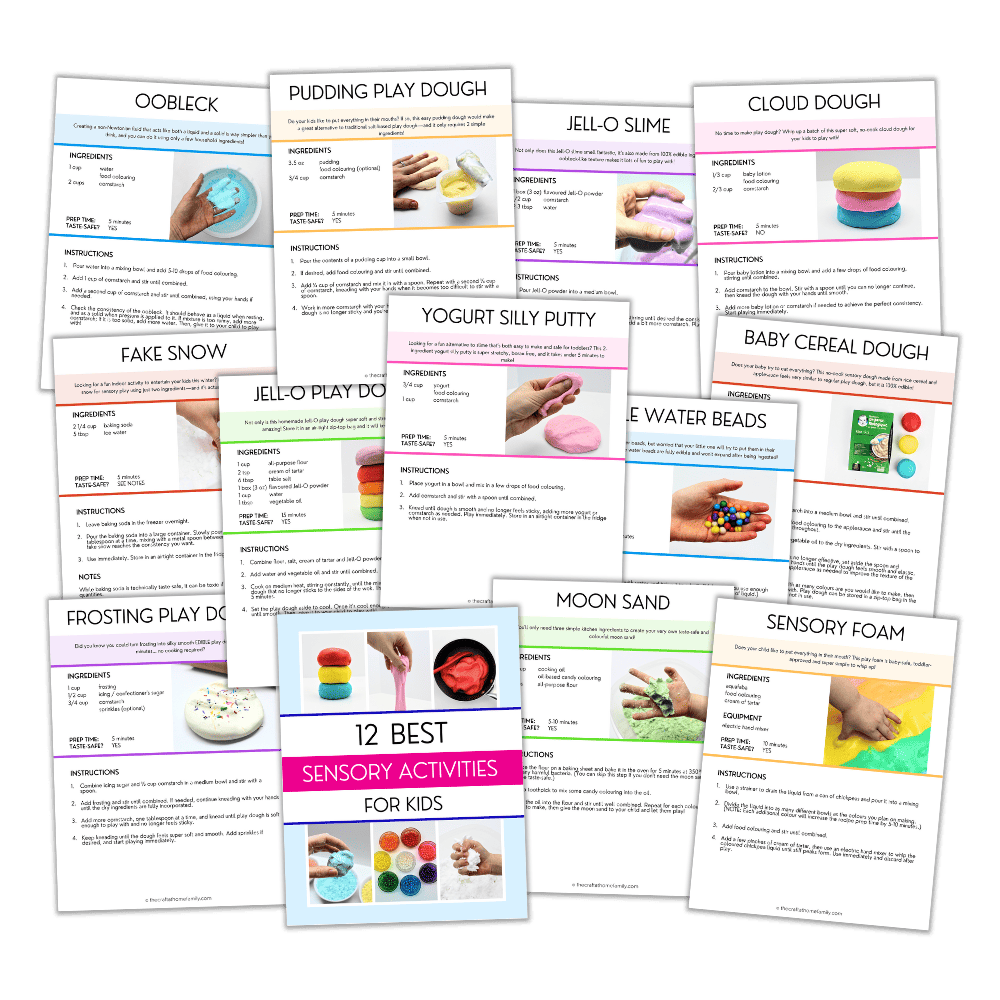
Already a subscriber? Don’t worry, you won’t be subscribed twice. By submitting your email address, you are agreeing to the terms of our Privacy Policy. You can unsubscribe at any time.
Required Equipment & Ingredients
Here’s what you’ll need to make your own baby-safe chickpea foam for sensory play:
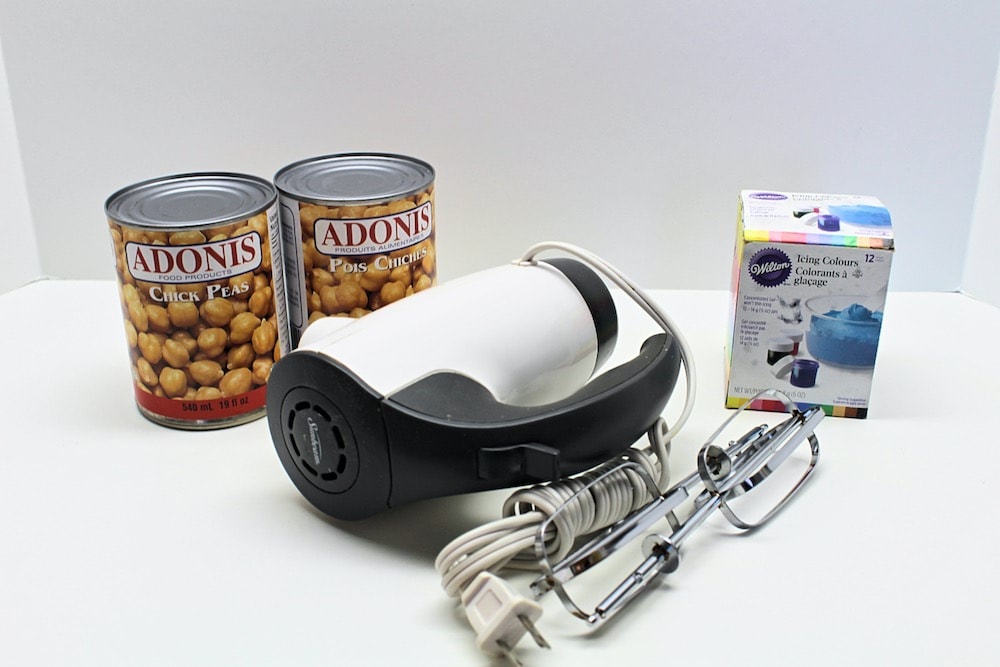
- Aquafaba
- Food colouring (liquid or gel) or your favourite natural alternative
- Cream of tartar (optional)
You will also need some large bowls as well as an electric hand mixer. These will allow you to whip the drained chickpea liquid into shape.
How to Make Edible Sensory Foam for Kids (Step-by-Step)
1. Drain Chickpea Liquid
Start by draining the liquid from a can of chickpeas into a container or bowl using a strainer.
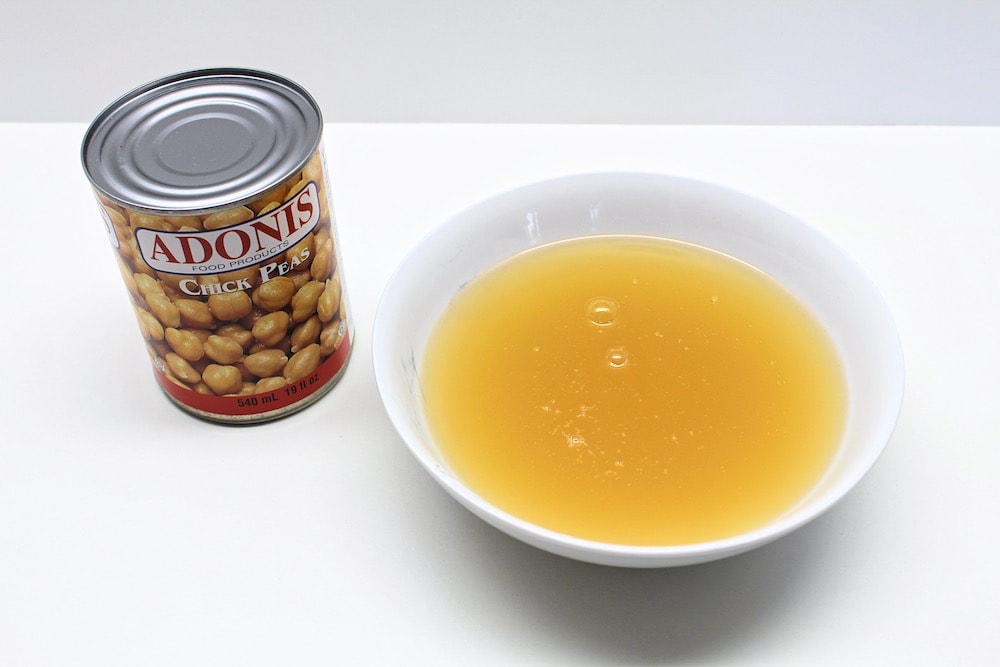
Because several kids were going to be playing with the foam, and because we wanted to make an entire rainbow of colours, I used the drained liquid from two cans.
If you don’t have as many kids to entertain or if you’re not planning on making more than one colour, one can of chickpeas should suffice.
2. Divide Liquid (Optional)
If you’re making several colours like we did, divide the aquafaba into as many different containers as the colours you’ll be making—we divided ours into six to make rainbow foam.
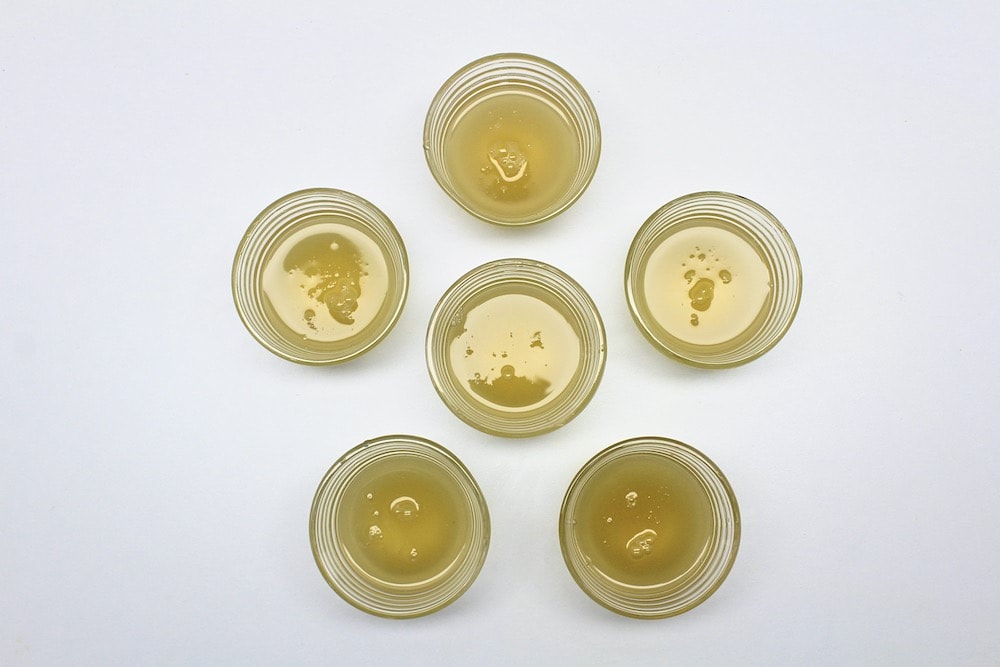
If you’re not planning on making multiple separate colours, you can skip this step and leave all the aquafaba in one large mixing bowl.
3. Add Food Colouring
Add some food colouring to the chickpea liquid and stir until combined. I used icing gel, which is extra concentrated, and stirred it in with a toothpick. But if you don’t have any gel food colouring, liquid food colouring will work just fine.
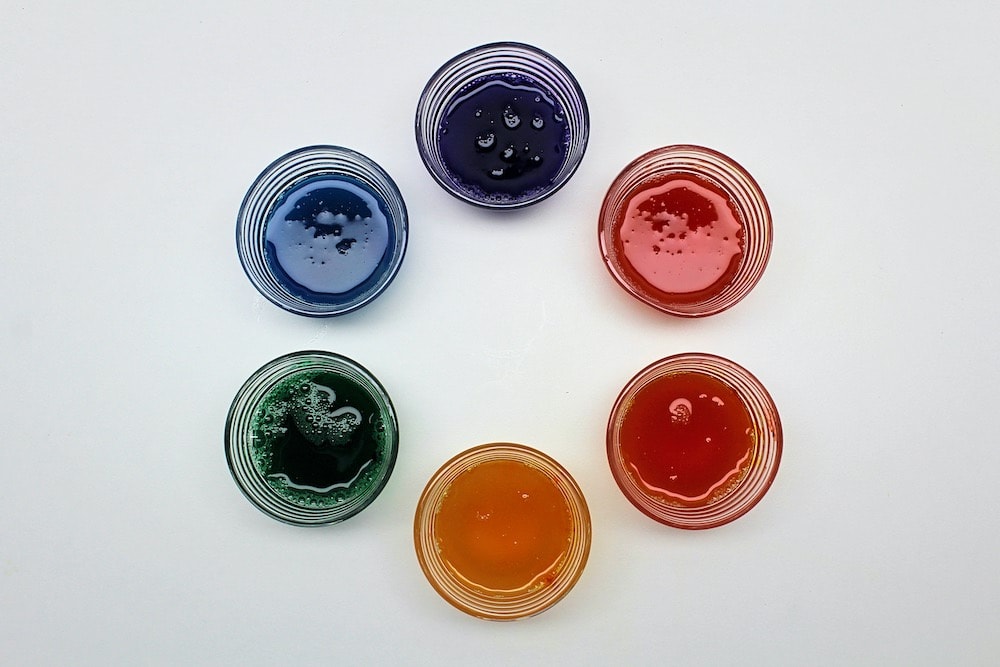
Note: If you want to create brightly-coloured foam, make sure the colour of the liquid is nice and dark after you have added the food colouring. The colour will look a lot lighter once the mixture has been whipped.
4. Whip Mixture Into Foam
Use an electric hand mixer to whip the coloured chickpea liquid until stiff peaks form. This may take a while, so if the peaks are still too soft, just keep whipping the mixture until it firms up.
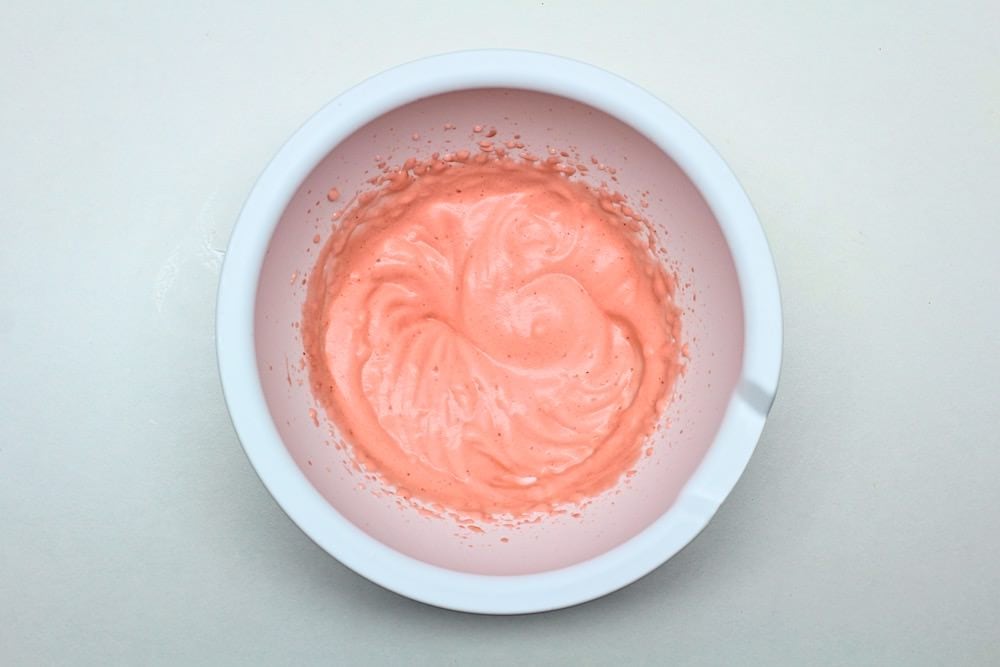
Adding a few pinches of cream of tartar will help the foam last longer and will give it a firmer texture (like it does when beating egg whites). But if you don’t have any, no need to worry—you’ll still be able to make the foam without it.
5. Repeat Previous Steps (Optional)
If you’re making several different colours, repeat the previous steps for each colour until all the aquafaba has been whipped. Then, place it on a baking sheet or inside a large container or bin, and let your child play!
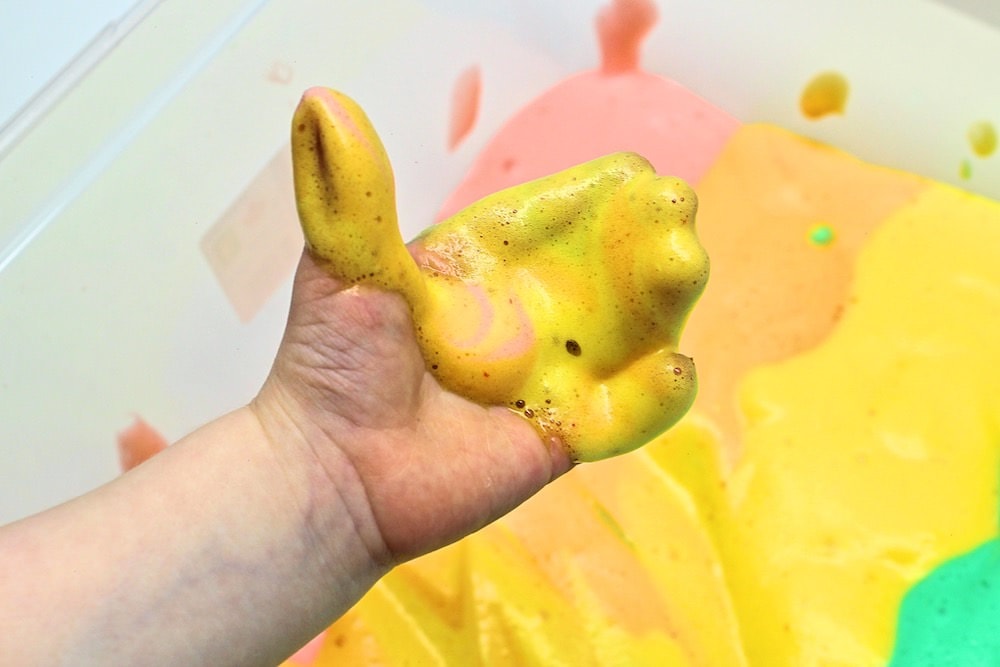
I had originally placed all the colours in rainbow order, but as you can see, the kids had fun mixing it around.
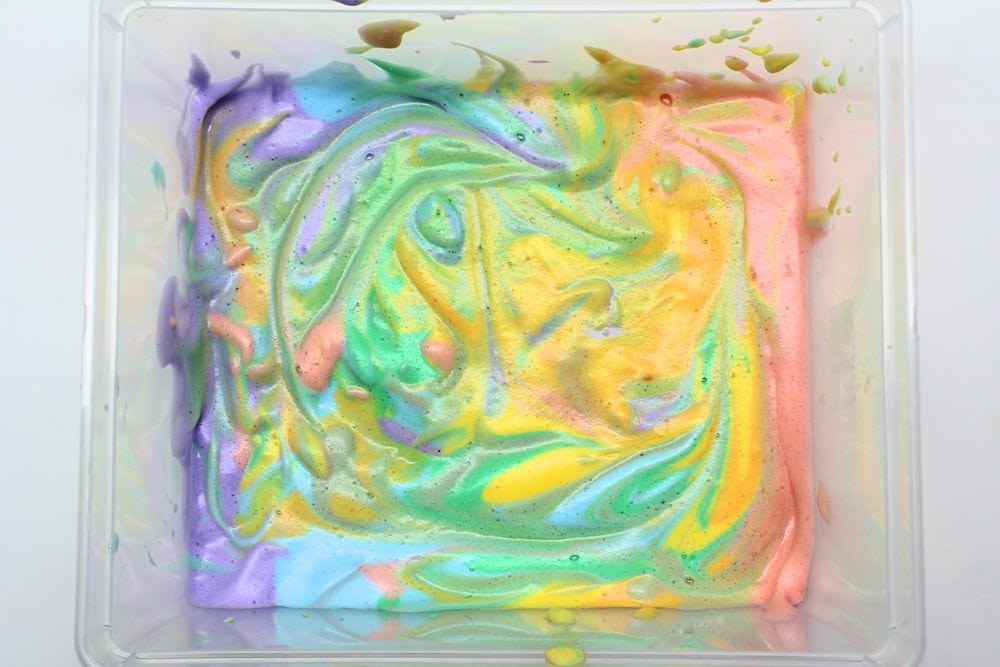
I also took out a muffin tin for them to play with, and they had fun scooping the edible foam into the cavities. It was such a relief to know that our sensory play was safe for our little ones, and that they wouldn’t be harmed if they decided to sneak a taste of their “muffins”!
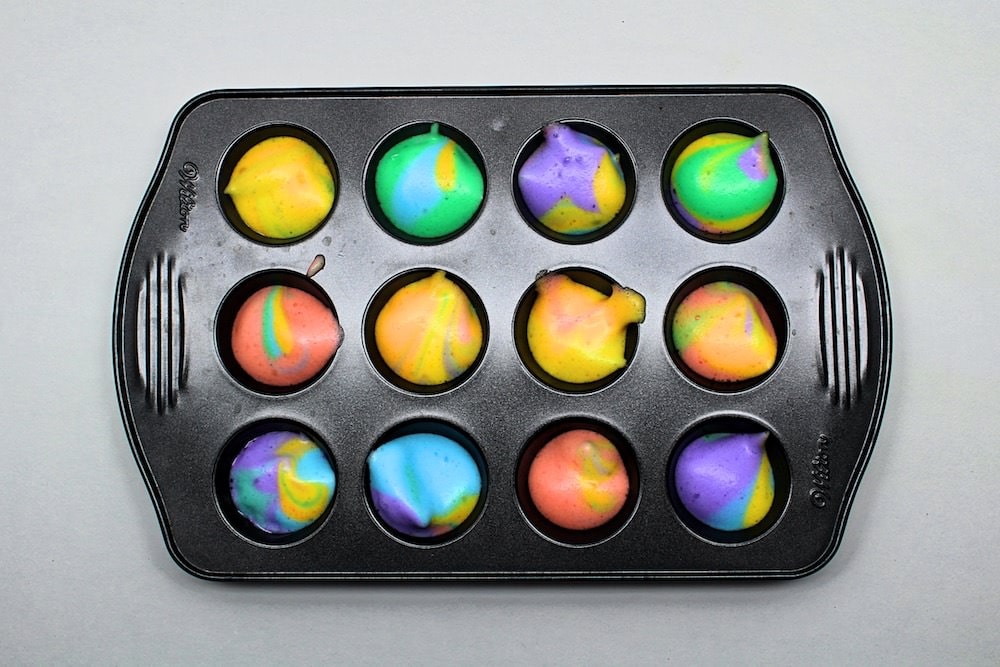
Frequently Asked Questions
Is Chickpea Foam Safe to Eat?
Absolutely! Whipped aquafaba is commonly used in vegan cooking to replace egg whites.
While I don’t recommend eating this foam as a snack (it doesn’t taste good anyway), it is great alternative for families who want to try new sensory play activities and who are looking for taste-safe options for their young kids.
How Long Does Chickpea Foam Last?
This is a one-time use sort of activity, but you should get several hours of play out of it, especially if you play with it somewhere that’s not too hot or sunny. (The foam tends to “melt” and turn back into liquid if it gets too hot.)
Can I Prep This Foam in Advance?
Unfortunately, since the texture of this sensory foam relies on the air that is injected into it during the mixing process, you won’t get the best results from prepping it in advance. The foam tends to turn back into liquid as the air escapes, and the liquid pools at the bottom of the bin.
That being said, chickpea water keeps for about a week in the fridge. This means that if you don’t have time to make the sensory foam right using the chickpeas, you can keep your aquafaba in an airtight container in the fridge for up to 5 days before whipping it up.
If you know that you won’t be able to make the foam within that timeframe, you can even freeze the liquid for later use.
If you really can’t prep this right before you use it, try to avoid peepping it too far in advance and keep it in the fridge to slow down the “melting” process. You can also try freezing the foam in small batches and thawing it right before play.
How Can I Store This Foam?
Because this taste-safe foam can’t be reused, you probably won’t need to store it.
But if you’re preparing it a couple hours in advance and want to keep it as airy as possible, place it in an airtight container in the fridge. The fridge is the best place to store this foam because it tends to “melt” faster when it’s exposed to heat or sunlight.
Can I Use a Blender or Food Processor?
The best way to whip aquafaba is to use a hand mixer or electric mixer, because it adds the most air to the foam and creates stiffer peaks. So if you have a hand mixer, that is what I recommend using.
That being said, if you don’t have a hand mixer and you really want to make this, you should be able to make this using a countertop blender, immersion blender or food processor. Just be prepared for softer peaks and runnier texture.
Can I Use the Liquid from Other Beans?
While chickpea juice is the most commonly used in recipes that call for aquafaba, you can make this recipe using the bean water from any canned beans.
Can I Use Homemade Aquafaba?
Yes, you can! If you don’t have any canned beans, you can make your own aquafaba at home and use it in this recipe.
Can I Make Chickpea Foam without Cream of Tartar?
Adding cream of tartar helps the whipped chickpea liquid hold its shape and form stiffer peaks, but if you don’t have any at home, you can definitely make this aquafaba foam without it.
Does Chickpea Foam Smell?
Because this foam is made from aquafaba, it will smell like chickpeas. I am personally not bothered by it, but I know some people are. If that’s you, you can always try adding some Kool-Aid powder or some sort of extract (like peppermint) to mask the smell.
That being said, if you open the can of chickpeas and notice an overwhelming smell of spoiled beans, it’s possible that the aquafaba has gone bad. If that is the case, it shouldn’t be used for sensory play.
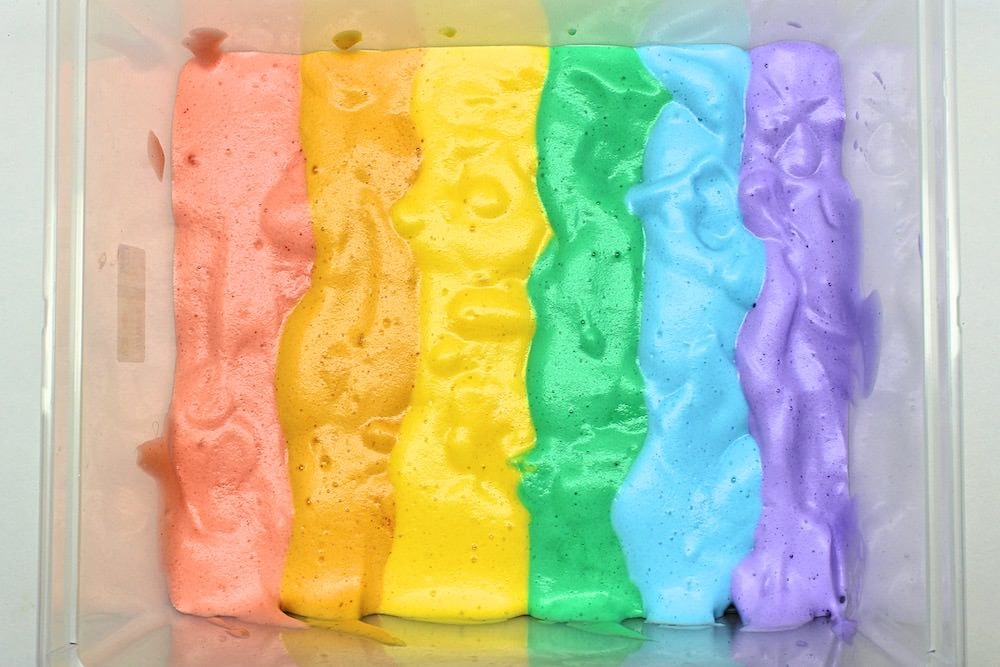
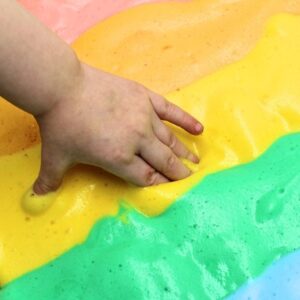
Taste-Safe Sensory Foam
Equipment
- electric hand mixer
Ingredients
- aquafaba
- food colouring liquid or gel
- cream of tartar optional
Instructions
- Use a strainer to drain the liquid from a can of chickpeas and pour it into a mixing bowl.
- Divide the liquid into as many different bowls as the colours you plan on making. (NOTE: Each additional colour will increase the recipe prep time by 5-10 minutes.)
- Add food colouring and stir until combined.
- Add a few pinches of cream of tartar, then use an electric hand mixer to whip the coloured chickpea liquid until stiff peaks form. Use immediately and discard after play.
Notes
Related Taste-Safe Activities
Looking for some more taste-safe sensory materials to make at home? Check out these articles:
- Taste-Safe Psyllium Husk Slime
- Edible Water Beads
- Edible Rainbow Marshmallow Slime
- Taste-Safe Moon Sand
Join my mailing list using the form below to receive 12 of the most popular sensory recipes on my site in PDF format! You’ll be the first to know when I publish new recipes, and you’ll also gain access to my free printables library, which is filled with lots of printable activities for kids.
GRAB OUR 12 BEST SENSORY RECIPES!
Subscribe to our email newsletter to receive 12 of our most popular sensory recipes in PDF format as a welcome gift:

Already a subscriber? Don’t worry, you won’t be subscribed twice. By submitting your email address, you are agreeing to the terms of our Privacy Policy. You can unsubscribe at any time.
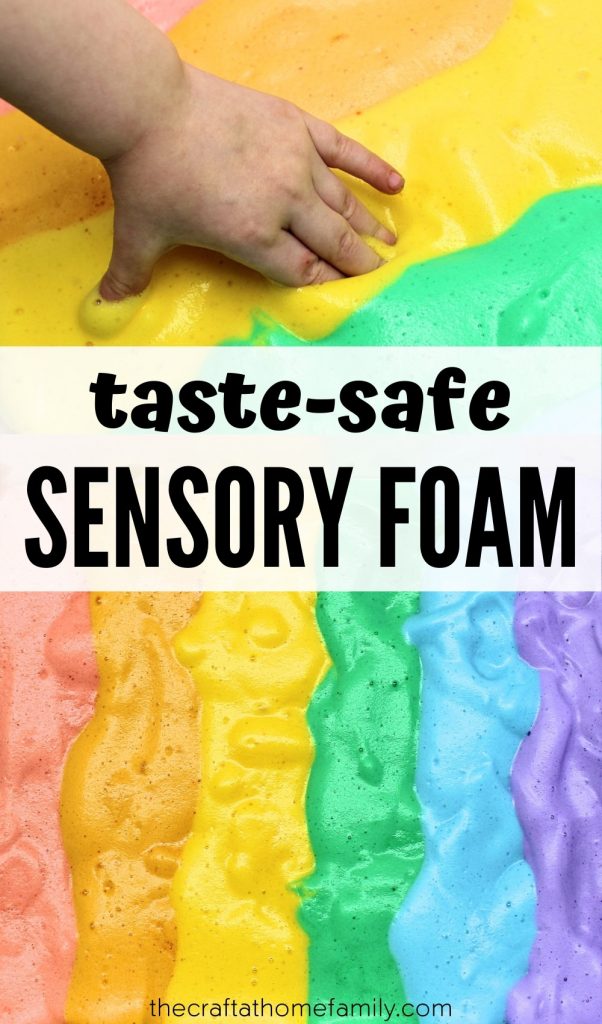
How long is the edible foam stable? I want to make it for my daughters birthday party. Can I make it a few days before ? Can it sit outside for several hours in 90 F heat?
Thanks so much!
Hi Heather! So sorry for the late response, I usually get notified of comments but for whatever reason, I never received any notifications about yours and only just noticed it! I hope this response doesn’t come too late and there’s still a bit of time before the party!
Our kids played with the foam for a couple hours and it was still stable at the end of their play time (although all the colours had blended together), but because the foam holds its shape thanks to the air that’s injected into by the electric hand mixer, I don’t think it would hold its shape if made a few days in advance.
Since it can’t be prepared too long in advance, if you’re short on time because of the party preparations (I totally get that!), you may want to consider limiting the number of colours you make to only one or two. That way, you would only have to blend up one or two batches on the day of the party and you would have more time to do other things. (Plus, it could turn into a fun colour-mixing game for the kiddos if you choose colours that combine well!)
If you’ll be leaving the foam out for several hours, I do highly recommend using cream of tartar to help the foam hold its shape. I’d also recommend keeping it indoors or in a shaded area right up until the kids are ready to play with it.
I hope that helps! Here’s wishing your daughter a very happy birthday!